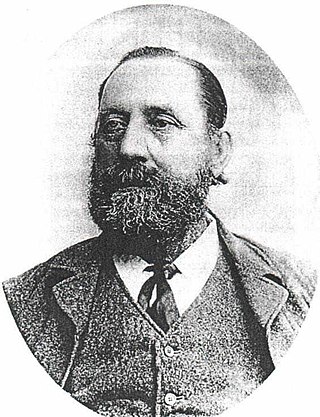Related Research Articles
William Wells was a New Zealand politician.

Nelson is a New Zealand parliamentary electorate, returning one Member of Parliament to the House of Representatives of New Zealand. From 1853 to 1860, the electorate was called Town of Nelson. From 1860 to 1881, it was City of Nelson. The electorate is the only one that has continuously existed since the 1st Parliament in 1853.
Samuel Stephens was a 19th-century surveyor and New Zealand politician.

Arthur Penrose Seymour was a 19th-century New Zealand politician from Picton. He was the 4th Superintendent of the Marlborough Province and was a member of the provincial government for all 16 years of its existence. With his strong advocacy for Picton, he successfully had the Seat of Government moved to Picton. When the Blenheim party secured a majority in the Provincial Council by 1865, Seymour negotiated the removal of the Seat of Government back to Blenheim.
Motueka and Massacre Bay was one of the original parliamentary electorates created for the 1st New Zealand Parliament. It existed from 1853 to 1860 and was represented by three Members of Parliament. In the 1860 electoral redistribution, the area was split in half, and the Motueka and Collingwood electorates were created from it.
Motueka is a former New Zealand parliamentary electorate. It was first created in 1860 and existed until the 1890 election, when it was abolished. For the 1896 election the Motueka electorate was recreated, and lasted until the 1946 election, when it was again abolished.
Waimea was a parliamentary electorate in the Nelson Province of New Zealand, from 1853 to 1887. Initially represented by two members, it was a single-member electorate from 1861.
Collingwood was a parliamentary electorate in what is now the Tasman region of the South Island of New Zealand from 1861 to 1881.
The Suburbs of Nelson is a former parliamentary electorate around the city of Nelson, New Zealand from 1861 to 1881.
The 4th New Zealand Parliament was a term of the Parliament of New Zealand.

Andrew James Richmond was a 19th-century Member of Parliament in Golden Bay / Mohua and Nelson, New Zealand.

John Fedor Augustus Kelling, JP, known as Fedor Kelling, was a 19th-century Member of the New Zealand Parliament, representing Nelson. A leader of a group of immigrants from Germany, he also served as the German consul.

John Kerr was a 19th-century Member of Parliament from Nelson, New Zealand. As well as Lake Station, Kerr also owned the 70,000 acres (28,000 ha) Tarndale Run and 30,000 acres (12,000 ha) around the Wairau River before entering into a business partnership with Molesworth Station owner Acton Adams. Kerr commissioned cob builder Ned James to build Tarndale homestead in 1874.

Thomas Alfred Sneyd Kynnersley, who signed as T. A. Sneyd Kynnersley, was a 19th-century Member of Parliament from the West Coast, New Zealand.

Martin Lightband was a 19th-century Member of Parliament from Nelson, New Zealand.
William Gibbs was a 19th-century Member of Parliament from the Nelson Region of New Zealand.

The 13th New Zealand Parliament was a term of the New Zealand Parliament. It was elected at the 1896 general election in December of that year.

John Wallis Barnicoat was an English civil engineer and surveyor who emigrated to New Zealand. In his chosen homeland, he became a local politician in Nelson. Towards the end of his life, he was a member of the New Zealand Legislative Council for 19 years.

The Wairau by-election 1872 was a by-election held in the Wairau electorate during the 5th New Zealand Parliament, on 19 February 1872. The by-election was caused by the resignation of incumbent MP William Henry Eyes and was won by Arthur Seymour, who defeated Joseph Ward. Both candidates were prominent Marlborough politicians, and for both of them, this was their first attempt at election to the General Assembly.
The 1873 Collingwood by-election was a by-election held on 9 December 1873 in the Collingwood electorate during the 5th New Zealand Parliament.
References
- Scholefield, Guy (1950) [First published in 1913]. New Zealand Parliamentary Record, 1840–1949 (3rd ed.). Wellington: Govt. Printer.
- Wilson, James Oakley (1985) [First ed. published 1913]. New Zealand Parliamentary Record, 1840–1984 (4th ed.). Wellington: V.R. Ward, Govt. Printer. OCLC 154283103.